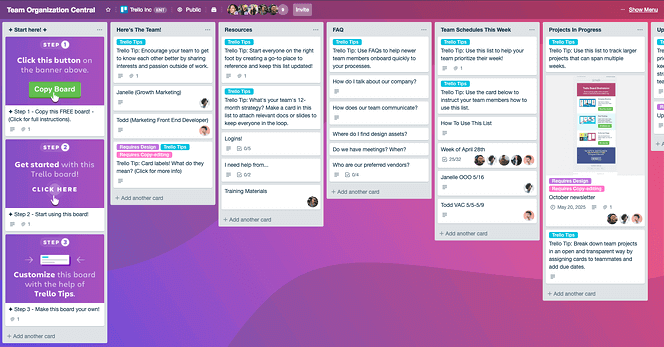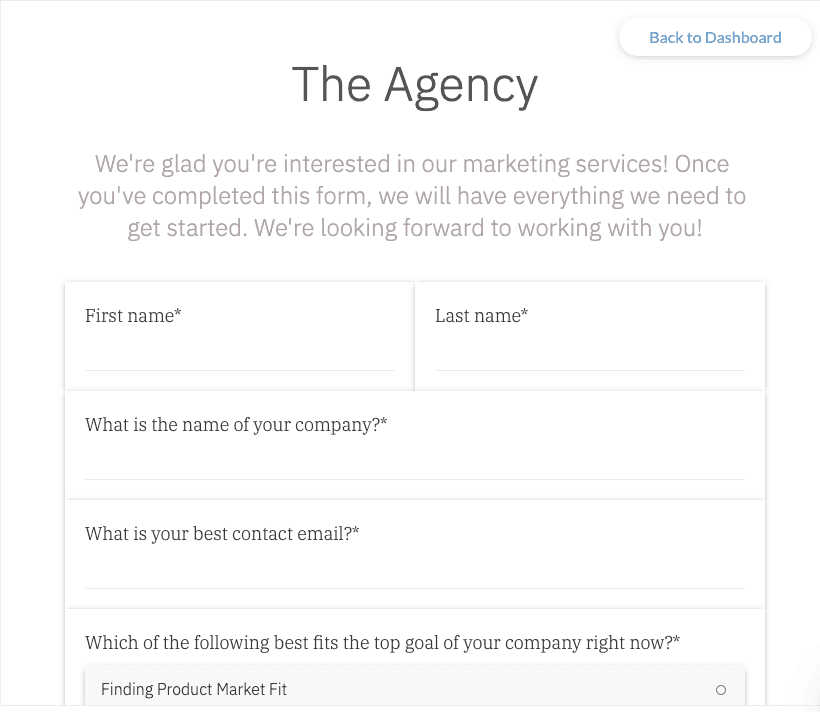It feels good to book a new client — especially when it’s your first (or first in quite some time). There’s a sense of excitement, of validation, in seeing that when can we get started response in your inbox.

It’s also a little terrifying.
You see, the selling stage is all talk. You’re saying things, making promises, and laying claim to potential outcomes. Are you stretching the truth? I’d certainly hope not, seeing as taking that route as a salesperson is a surefire way to lose a client faster than it took to sign them on.
No, the fear that’s felt when taking on a new client stems from your old, but constant friend: imposter syndrome.
As a freelancer or someone who’s recently started their own business, there’s no better time to doubt yourself than all the time. Especially in the early days.
To be honest, I’m still dealing with imposter syndrome — four years after freelancing full-time. I don’t think that you ever fully get over it, which is why it’s important to figure out how to embrace it and move forward.
In a way, it’s more comforting telling yourself you can’t do something than to have to figure out how to do it. It’s less work to retreat into negative thoughts than to push forward and continue taking risks.
It will also get you nowhere.
A surefire way to combat doubt is to organize and build out a plan. Or, as it relates to client onboarding, a process.
Table of Contents
Start your free 14-day Fanbooster trial
Why do you need a client onboarding process?
To answer this question, put yourself in your client’s shoes for a second.
Imagine that you’ve just gotten off the phone with a potential social media marketing agency and have confirmed that you’re ready to move forward with their services.
They send a contract, You put down a 50% deposit, dot the i’s and cross the t’s, and notify your team of the new partnership.
What happens next can take on several frustrating forms:
- You hear nothing back for weeks
- You receive countless one-off emails asking for various logins and details
- Deadlines come and go with no deliverables to show for them
None of these things would make you feel super confident in your new service provider’s abilities, would it? It certainly doesn’t read as professional.
Working as a freelancer or small agency doesn’t give you the excuse to be sloppy. You’re still a business and will be expected to operate as such, whether you’re a team of five or one.
A client onboarding process helps you start a new client relationship off on the right foot. It shows that you’re serious about your business, the client, and the goals you’re jointly working to attain.
Creating a confidence-building client onboarding process: 6 steps
There’s a certain kind of business savvy that only comes from actually doing the work and making mistakes. And if you don’t have agency or client-facing experience already under your belt, the idea of creating any kind of process — let alone one for onboarding — can seem a bit daunting.
But rest assured:
Nobody gets their process right the first time. It takes trial and error, but you need to start somewhere. Besides, some plan is better than no plan.
To create a client onboarding process that’ll leave everyone (yourself included) feeling confident, follow these steps:
Step 1: Capture the play-by-play
Another way to think about your client onboarding process is as a set of repeatable steps. You’re essentially building out a play-by-play that can be replicated and applied time and time again with new clients.
Outside of maintaining a sense of professionalism, organizing yourself around a unified process ensures that you gather all of the information needed in one fell swoop. This is beneficial for time efficiency.
As you walk through the remaining steps, document your process from beginning to end in a centralized location (e.g. an intranet).

Trello offers a team knowledge base template that you can copy to build an intranet.
This is especially important for teams with multiple employees. You want everyone operating on the same page and offering a similar onboarding experience from one client to the next.
To get started, you’ll need some custom images to reflect your branding.
Step 2: Make a list of everything you’ll need from a client
Think of your onboarding meeting as a kick-off for the partnership. You’re getting things off the ground with a new client and setting yourself up for success in relation to the deliverables promised.
But before the kick-off call, make sure to send a list of everything you’ll need from the client to get started. You want this first meeting as partners to go smoothly so as to inspire confidence — not putting them on the spot and feeling unprepared because you still need information to do your job well.
Some examples of things needed may include:
- Access to social media accounts
- Access to Google Analytics
- Government Access to advertising platforms
- Access to a blogging platform
- Brand guidelines
- Creative assets (e.g. logos, stock photography, graphics)
- An organization chart
In addition to the items shared above, you may also have some additional clarifying questions relative to the work you’ll be performing.
For the sake of capturing all of the necessary details, consider sending every new client a templated questionnaire with these questions. This way, you can use your specific meeting time to review their answers and follow up on items that may still be unclear.

It’s worth noting that different clients will have different levels of reliability when it comes to getting what you need from them. In a lot of ways, you need to be the project manager and hold your client accountable for the success of your services.
Step 3: Streamline Your Documentation
From contracts to invoices, there are a number of professional documents you should have ready to send both prior to and during the onboarding process. Give some thought to the timing and appearance of these documents.
For example, after you’ve received confirmation of an accepted client proposal is the perfect time to follow up with forms for them to fill out.
This could include your contract, a client intake form, and an invoice (if you require any amount of payment upfront). Alternatively, it might make sense to send a client intake form first before having them sign on the dotted line — that way you know they’re serious about providing the information necessary to proceed.

And.co offers clean, professional templates for proposals and invoices.
Appearance-wise, your documents don’t have to be pieces of art but they should look clean and be user-friendly at the very least. If you can add some creative elements (e.g. your logo), this will also help in establishing brand recognition.
Step 4: Get the Right Tools in Place for Setup
If you’re expecting your clients to be organized and thorough with the information they’re providing, you better be prepared to do the same. Think about all of the tools you’ll need in terms of both initial setup and monthly maintenance.
Some of the tools you may need for successful a client onboarding process and management may include:
- A video conferencing platform for the kick-off call
- Social media management tools for organizing and collaborating on content
- Survey software for client intake forms
- A cloud-based file hosting service that allows you to share and collaborate on documents
- Invoicing software for sending and tracking payments
Step 5: Set a kick-off meeting with the client
Once you’ve had an opportunity to look over the client intake form and other supportive materials, it’s time to get on the phone (or video chat, or an in-person meeting if possible) to make sure that everyone’s on the same page about how to move forward and to get any lingering questions answered.
Ideally, you’ll set an agenda for the call ahead of time that includes what you want to cover and who should be present from both teams. While you’re on the call, make sure to set expectations for follow ups — whether that’s the next meeting date or when the client can expect progress reports.
Regardless of the particular client or the strategy that you’ve put together for them, make sure that you go into this process with a roadmap for what you plan to talk about. By controlling the flow of the meeting, it will help the client to see you as a professional and set a positive vibe for the relationship moving forward.
Step 6: Leave room for follow-ups and feedback
Once you’ve got the bones in place for your client onboarding process, leave notes to account for post-onboarding follow-ups. Communication is key, especially when you’re not working onsite with your client.
Your first due date for a client may not be for another month after the onboarding takes place but that doesn’t mean you should go radio silent. Set up reminders on your calendar to reach out proactively at various checkpoints.
Additionally, after a project has been completed, send out a survey to gather feedback on the relationship. You can work in questions that call out onboarding in particular for the sake of better understanding and iterating on what resonates most in the very early stages of a new client relationship.
Final Thoughts: Implementing your new client onboarding process
Every client is different and as such, each will have their own set of nuances to account for when getting started on a new project. Even so, having a streamlined client onboarding process in place will keep you organized and ready to hit the ground running — imposter syndrome and all.



